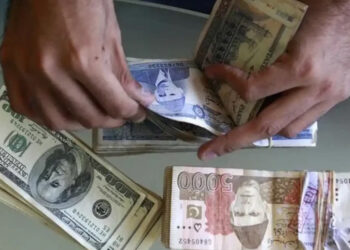The Chinese yuan has surpassed the US dollar as the most traded currency in Russia, with the shift becoming more pronounced in March.
This comes after Western sanctions against Russia affected the ability of Russian banks to make cross-border transfers in dollars and other currencies. Since the invasion of Ukraine in 2022, Russia has strengthened its ties with China, and Chinese President Xi Jinping promised expanded cooperation in areas such as trade, investment, and technology during his visit to Moscow in March.
According to a report published in Bloomberg, the switch comes after additional sanctions this year affected the few banks in Russia that retained the ability to make cross-border transfers in dollars and other currencies of countries branded “unfriendly” by the Kremlin.
Raiffeisen Bank International AG, whose Russian branch remains one of the main conduits for international payments in the country, was among lenders that came under elevated pressure from European and US authorities.
The Bloomberg report says that Russia has deepened its ties with China since the Feb. 2022 invasion prompted a break in relations with the West. In March, Chinese President Xi Jinping made Moscow his first visit abroad after his reelection and promised the Kremlin expanded cooperation in the areas of trade, investment, supply chains, mega projects, energy and hi-tech.
It says sweeping sanctions targeting Russia’s financial system have forced the Kremlin and Russian companies to switch their foreign-trade transactions from the dollar and euro to currencies of countries that have declined to join any restrictions.
The Finance Ministry converted its market operations to the yuan instead of the dollar earlier this year and developed a new structure for the national wealth fund to hold 60% of its assets in yuan. The Bank of Russia regularly calls on companies and citizens to move their assets into the ruble or “friendly” currencies to avoid the risk of having them blocked or frozen.
Bloomberg says global foreign-exchange reserves allocation in the yuan accounted for about 2.7% of the total amount by end of last year, down from the peak at 2.9% in the first quarter, IMF data showed.
“Now there are fewer dollars on the market as Russia’s revenues decreased due to the oil-price drop and a decrease in exports,” said Iskander Lutsko, a strategist at ITI London. At the same time, “commodity imports from Russia to China are up by 29%, although exports from China are stagnating.”


































